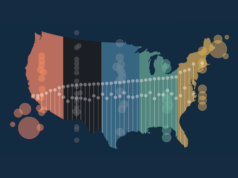
An anonymous researcher in Eastern Europe submitted a contrived and completely bogus scholarly manuscript to an open-access publisher based in Asia. The publisher quickly completed a fake peer review, accepted the submission, and invoiced the researcher for the author fees.

To start, here’s a little information about the publisher. It is apparently based in South Korea, and it goes by several names:
- Advanced Institute of Convergence Information Technology (AICIT)
- The International Association for Information, Culture, Human and Industry Technology
- Convergence Information Society
It appears the publisher is slowly abandoning the website that uses its original name — AICIT — and moving the content and journals to the third one named above, the Convergence Information Society, whatever that name means.


The submitted article is total scientific nonsense. Its title is “PHY-MAC Detection and Prevention from Distributed Attacks in WiMAX P2P and Infrastructure Networks.” It was submitted to, and accepted in, the journal Advanced Information Sciences and Service Sciences.

The Editor-in-Chief of the journal and apparent publisher is Franz I. S. Ko, Ph.D., and he appears to be the EiC or co-EiC on most of the journals his firm publishes. I would say this makes him a busy man, but because the journals likely provide the same peer review results for every article they publish, he’s likely actually not so busy.

In fact, here is a selection from the peer review report the researcher received:
Expected Publication Date: Your accepted paper will be published in 3 – 4 months (Fast-Track: 1 – 2 months) after completing the publication process (according to publication schedule)
If an author want to accelerate the publication process, please follow the submission and publication process strictly.
You can find final review result for your article below.
Title: PHY-MAC Detection and Prevention from Distributed Attacks in WiMAX P2P and Infrastructure Networks
Authors: Researcher Ramis Mlekar,
Country: The former Yugoslav Republic of Macedonia
Final Decision (Accept/Reject): Accept
== Comments ==
Information for the Contribution:
1. Writing Skill and Quality (0-10): 9
2. Quality of content (0-10): 8
3. Fitness of title (0-10): 9
4. Significance for theory or practice (0-10): 8
5. Contribution and Originality (0-10): 9
6. Level of Innovation (0-10): 8
7. Quality of presentation (0-10): 9
8. Ripple effect to other authors (0-10): 9
9. Decisive overall recommendation (0-10): 9
The paper is being reasonably well written and discussing a relevant content for journal.
I believe that this research is worth publishing.
The author(s) of the manuscript have presented an algorithm for detection the PHY-MAC from the malicious behavior. The illustration is fine and clear. It would be more useful for readers if the authors give more compared discussions with the other available methods.
These last two short paragraphs are the incompetent reports from each of the two “peer reviewers.” I think that many other authors have received similarly-worded peer review reports.
While I don’t recommend that researchers carry out sting operations with scholarly publishers (this is better left to gonzo journalists), I do acknowledge that this particular sting as reported to me provided valuable information.
And finally, I do recommend that researchers not submit any articles to the Advanced Institute of Convergence Information Technology (AICIT) under any name it uses, including the Convergence Information Society.












